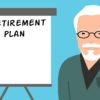Investment
Baby Boomers Using Reverse Mortgages Instead of Retirement Plans
More baby boomers who are struggling financially are now choosing reverse mortgages. According to Inside Mortgage Finance, borrowers took out nearly $15.3 billion in reverse mortgages in 2013, an increase of more than 20% over the previous year.
77 million baby boomers are set to retire soon, yet only 18% are confident in their ability to do so. Many are now viewing reverse mortgages as a retirement tool and alternative to a retirement plan, despite the inherent risks of these loans.
Reverse mortgages allow borrowers aged 62 and older to borrow money against the value of their home. Many baby boomers without savings are able to fund retirement by converting their home into cash.
While reverse mortgages can be an effective tool during retirement, most advisers are skeptical of their benefits and view them as the option of last resort.
“They cost a lot, and there are better ways to pay for retirement,” said Charles Hughes, a financial adviser. “Gone are the days of gleefully burning the mortgage and passing the home on to children.”
The idea of taking out equity from a home also goes against most retirement planning beliefs. While most advisers encourage retirees to have their debts paid off in retirement, a reverse mortgage requires taking a new debt at substantial fees.
There are three forms of reverse mortgages: single purpose loans offered by nonprofit organizations and local governments; federally insured reverse mortgages, and proprietary mortgages which are private loans backed by companies. According to the Federal Trade Commission, single-purpose reverse mortgages tend to be the least expensive, although fees can easily top thousands of dollars.
Cost is just one downside to using a reverse mortgage to finance retirement. For the borrower to stay in their home, they must keep up maintenance, property taxes, and insurance on the home. If any of these requirements are not met, the loan will go into default and the lender can foreclose.
Reverse mortgages also become due immediately when the borrower sells the home, moves out, or dies. This not only affects dependents but also non-borrowing spouses, who are then considered a tenant and must leave. Spousal eviction is a very real risk of a reverse mortgage, as the property may be sold out from under the surviving spouse when the borrower dies.
Finally, a reverse mortgage usually means that heirs are left out. The only way for heirs to keep the family home after the borrower dies or moves into a nursing home is to pay the balance in full.
Retirement planners and financial advisers encourage retirees to look for other options before taking out a reverse mortgage. A less risky way to finance retirement is simply moving to a smaller and less costly apartment or small home. Realistic lifestyle changes may also be necessary, including moving to a more affordable state.







